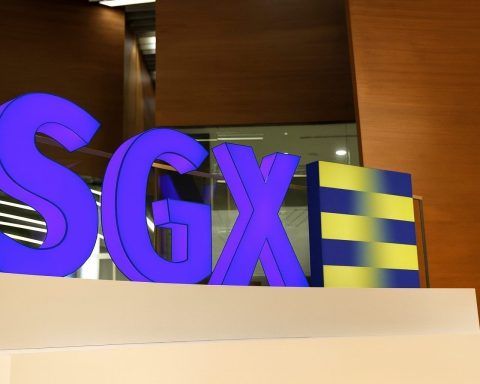- OPEC+ Surge in Output: Crude futures fell over 1% as reports say OPEC+ will approve another output boost for November – likely adding ~137,000 barrels per day (on top of October’s increase) [1] [2]. This pivot (reclaiming market share) drove WTI toward $64.80/barrel and Brent near $69.30, down roughly 1.3% from recent levels [3].
- Gold’s Historic Run: Gold rocketed to a new all-time high near $3,812/oz on Sept. 28 [4], extending its rally. Bullion has jumped about 43% year-to-date, its best annual performance since 1979 [5] [6]. Traders piled into gold as a safe-haven amid Fed-cut expectations, dollar weakness and geopolitical anxieties [7] [8].
- Silver & Precious Metals Surge: Other precious metals also spiked – silver briefly hit mid-$40s (up ~2.4% on the day) and platinum, palladium rallied strongly [9] [10]. Deutsche Bank now forecasts average gold of $4,000 in 2026 (up from $3,700) and even lifted its silver forecast, citing insatiable central bank demand [11] [12]. (Silver is up ~55% this year.)
- Macro Drivers – Dollar & Fed: A softer U.S. dollar (down ~9% YTD [13]) and rising Fed‐rate‑cut bets have turbocharged gold demand. Investors fear U.S. budget battles (a looming government shutdown) and Trump’s political interventions, undermining confidence in “fiat” currency [14] [15]. By contrast, recent strong U.S. data briefly boosted the dollar and sent gold slightly lower when markets pivoted back to inflation, reflecting the tug-of-war between risk-on and safe-haven flows [16].
- Historic Context: 2025’s commodity moves are eye-popping: oil is sliding from year-highs as supply hits multi-year peaks, while gold is soaring—already eclipsing its previous all-time high and challenging all other assets [17] [18]. As one strategist notes, “Gold is acting as a haven…Investors can be a jumpy lot” amid wars and inflation fears [19].
With volatility high, market watchers brace for more drama: Fed meeting minutes, inflation reports and further OPEC decisions in coming days could send prices swinging again.
Oil Market Retreats on OPEC+ Output Plans
Oil has turned lower after recent strength, as traders anticipate OPEC+ will continue lifting production to chase market share. Reuters reports that at its Oct. 5 meeting, the producer alliance (OPEC plus allies like Russia) is expected to approve at least another 137,000 barrels per day increase for November [20] [21]. This would unwind more of last year’s steep cuts ahead of schedule. Price action has reflected that outlook: September settlement WTI crude (~$64.8, Nov futures) and Brent (~$69.4) each dipped about 1–1.4% on the news [22].
“The prospect of OPEC+ raising oil production has increased ahead of the meeting,” noted Phil Flynn of Price Futures Group [23]. Analysts warn an oversupplied market looms if cuts unwind too quickly – Ole Hvalbye of SEB Bank cautions that adding output in line with new quotas could drive “a sizeable surplus from September 2025 through 2026” [24]. Indeed, OPEC+ has already reversed course: it boosted quotas by ~2.5 million bpd since April 2025 (including extra output from the UAE) to placate U.S. pressure and recapture volume [25].
Meanwhile, disruptive factors on the supply side have had mixed impact. A spike in oil prices to above $70 recently (earlier in Sept.) was linked to drone attacks on Russian refineries [26] – but that was overridden by the OPEC output story. In essence, markets now weigh ample supply (and signs of rising global inventories) against demand concerns (slowing economy) and geopolitical shocks. With U.S. crude inventories modestly up and demand growth uncertain, many traders are now hedging for lower oil prices. As a result, fuel-sensitive sectors (transport stocks, refineries, etc.) have broadly underperformed.
Gold Extends Record Rally amid Safe-Haven Fervor
By contrast, gold is riding a historic bull run. Bullion surged to an all-time high above $3,800/oz late Sept. [27], topping its prior peak from just days before. On Sept. 28, New York spot gold hit $3,812.05 briefly before pulling back [28]. That represented a ~1.4% jump on the day and capped six straight weeks of gains. Traders cite a constellation of bullish factors: a weaker dollar, easier U.S. monetary policy ahead, and widespread anxiety (U.S. fiscal fights, slowing growth, trade tensions).
Analysts emphasize gold’s classic “safe-haven” role. As The Guardian notes, gold is “acting as a haven and a store of value” in the current climate [29]. World Gold Council data shows record fund inflows (≈$5.6 billion into gold ETFs in one week, ~$17.6 bn over four weeks) as investors reposition out of stocks and low-yielding bonds. Deutsche Bank, for example, now projects gold at $4,000/oz next year [30] – highlighting that central bank buying is “running at twice the pace” of the last decade [31]. In plain terms, China and other major banks are hoovering up gold reserves, reinforcing the rally.
Industry experts weigh in: Stephen Innes of SPI Asset Management stresses gold’s scarcity: “no policy, no discovery, no quantitative easing of geology can debase gold,” meaning its value can’t be easily inflated away [32]. Arnab Das of Invesco sums up the mindset: he sees “no true alternative to gold as a hedge against U.S. risks” and expects central banks to keep accumulating it [33]. Similarly, M&G’s Eva Sun-Wai points to a “de-dollarization trend” (amply driven by politics and trade wars) that is making the dollar less trusted – “a big reason why gold…has become the safe haven choice,” she says [34].
Yet gold isn’t immune to shifts. When the dollar recently ticked up on strong U.S. inflation data (and reports of fading Fed cuts), gold prices eased a bit. For example, Reuters notes gold “eased” by ~0.8% on Sept. 24 as the U.S. dollar firmed [35]. (Spot gold fell back to ~$3,734 from its record.) Traders were digesting Fed Chair Powell’s recent comments and eyeing upcoming U.S. PCE inflation and jobs figures. Blue Line Futures strategist Phillip Streible commented that gold was “slightly cautious” ahead of key data [36]. But even these pullbacks have been relatively shallow: each dip has been bought aggressively, reflecting deep conviction that tailwinds outweigh headwinds.
Silver, Platinum & More Join the Run
Gold’s rally has lifted other metals too. Silver, often dubbed “gold’s little brother”, has been on a tear. Prices hit 13-year highs – briefly surging above $46/oz (on Sept. 26) before some profit-taking [37]. That’s more than a 50% gain since early 2025. Platinum and palladium also rallied sharply (each up +~2–3% on last reports), helped by industrial tightness and exchange-traded fund flows [38].
These moves underscore a broad commodity uptrend: commodities indices have climbed steadily as global growth concerns compete with inflation worries. Agricultural staples (like wheat and corn) are mixed, but energy (natural gas, gasoline) is softer on the oil drop [39]. Copper and base metals have also enjoyed gains recently (copper +0.8% to ~481¢/lb [40]), supported by expectations of more fiscal stimulus and infrastructure spending worldwide.
Even Bitcoin and crypto assets (not traditional “commodities”) have mirrored some of this risk sentiment, trading higher as investors rotate funds. But gold’s unique non-yielding status means it tends to outperform in times of acute uncertainty or when real interest rates fall. With global debt at record highs and policy credibility in question, many see gold as more attractive than both cash and risk assets right now.
Drivers: Fed, Dollar and Geopolitics
Underlying all this is central-bank policy and currency moves. After cutting rates in July, the Fed has telegraphed more easing ahead (markets now price in ~2 more cuts by year-end [41]). Lower interest rates reduce the opportunity cost of holding gold (which pays no yield) and often weaken the dollar. Indeed, the dollar index is off its peaks – down about 9% YTD [42] – making gold cheaper for foreign buyers. “If the Fed holds rates steady or cuts, that could send the dollar lower and gold even higher,” many analysts say.
Inflation and fiscal policy loom large too. U.S. inflation remains well above target, but mixed data (slowing inflation with a cooling jobs market) has fed the rate-cut narrative. Meanwhile, the U.S. faces a budget impasse: if Congress doesn’t raise the debt ceiling, a government shutdown or debt crisis could spook markets. As Bloomberg noted, gold’s rise is happening “as traders weigh a potential US government shutdown” [43] – a classic flight-to-safety scenario.
Geopolitical tensions are another catalyst. Ongoing wars and crises (Ukraine, Middle East, South China Sea) stoke fear of energy disruptions and currency instability. That was evident early in 2022/1979 when gold skyrocketed amid oil shocks. The Guardian reminds that gold hasn’t done this well in decades, noting that the last comparable surge was in 1979 when the Iranian revolution triggered a spike in oil and inflation [44]. Today, with Russia still at war and fresh trade frictions, many investors are anxious. Gold tends to thrive when uncertainty is high [45] [46].
Finally, technical factors contribute. Short-term momentum and breaking of previous resistance levels have triggered algorithmic buying. Precious-metal ETFs have seen record inflows. “We see no true alternative to gold,” as Arnab Das puts it [47] – an attitude fueling a classic momentum rally.
Outlook – Is the Rally Sustainable?
With so many bullish signs, some wonder how long this can last. Bank strategists are cautiously optimistic: Deutsche Bank expects further gains through 2026 (forecasting ~$4,000 gold [48]). Gold remains under-owned (private portfolios hold only ~0.4% in gold, per BofA [49]), so there’s room to run. But risks exist: if the Fed surprises with hawkish talk, or if the economy suddenly revives, gold could retreat. Likewise, if OPEC+ actually blinks and cuts production instead, oil could rebound.
For now, however, the trend favors gold and other safe havens while oil faces headwinds. Every data release and policy statement will be scrutinized. As one expert summarized, “Gold has further to rise… central banks are buying gold because they see no fiat alternative to the dollar.” [50] In plain terms: in these turbulent times, many investors prefer a bar of gold over a barrel of oil.
Sources: Market data and expert commentary compiled from Bloomberg, Reuters and The Guardian [51] [52] [53] [54], including statements by market analysts and central bank reports. All figures are as of late September 2025.
References
1. www.bloomberg.com, 2. www.reuters.com, 3. www.bloomberg.com, 4. www.bloomberg.com, 5. www.theguardian.com, 6. www.theguardian.com, 7. www.bloomberg.com, 8. www.theguardian.com, 9. www.bloomberg.com, 10. www.reuters.com, 11. www.reuters.com, 12. www.reuters.com, 13. www.theguardian.com, 14. www.bloomberg.com, 15. www.theguardian.com, 16. www.reuters.com, 17. www.theguardian.com, 18. www.reuters.com, 19. www.theguardian.com, 20. www.bloomberg.com, 21. www.reuters.com, 22. www.bloomberg.com, 23. www.reuters.com, 24. www.reuters.com, 25. www.reuters.com, 26. www.reuters.com, 27. www.bloomberg.com, 28. www.bloomberg.com, 29. www.theguardian.com, 30. www.reuters.com, 31. www.reuters.com, 32. www.theguardian.com, 33. www.theguardian.com, 34. www.theguardian.com, 35. www.reuters.com, 36. www.reuters.com, 37. www.reuters.com, 38. www.bloomberg.com, 39. www.bloomberg.com, 40. www.bloomberg.com, 41. www.reuters.com, 42. www.theguardian.com, 43. www.bloomberg.com, 44. www.theguardian.com, 45. www.theguardian.com, 46. www.reuters.com, 47. www.theguardian.com, 48. www.reuters.com, 49. www.theguardian.com, 50. www.theguardian.com, 51. www.bloomberg.com, 52. www.bloomberg.com, 53. www.theguardian.com, 54. www.reuters.com










